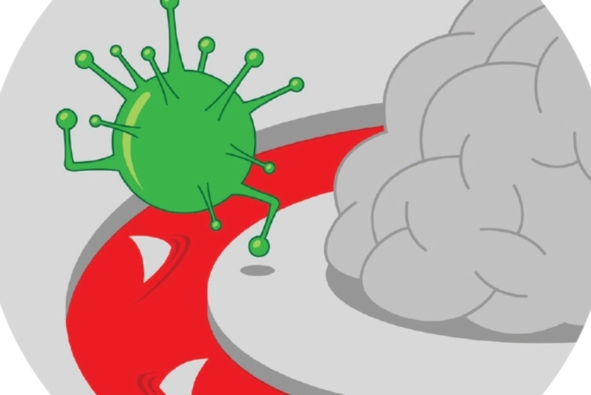
2016年6月12日讯 /生物谷BIOON/ –如何穿过血脑屏障是医学治疗所面临的一个特别的挑战:由细胞紧密排列形成的血脑屏障将脑部与外部环境隔绝开来。虽然血脑屏障能够阻止有害化学物质以及细菌入侵我们的控制中心,但同时大约95%的口服和静脉注射药物也被血脑屏障所阻挡。这就导致医生在进行帕金森等神经退行性疾病的治疗过程中,只能选择直接将药物注射到脑部,而这种侵入性方法需要在颅骨上钻孔才可以实现。
之前一些科学家已经能够借助超声或纳米颗粒的帮助使静脉注射药物通过血脑屏障,但是这些方法都只能靶向一些很小的区域。而在一项最新研究中,神经科学家Viviana Gradinaru和她的同事们利用工程方法获得了一种能够穿过屏障的无害病毒,可以将治疗药物送达脑部。
Gradinaru等人选择病毒作为工具的原因在于病毒本身非常小,并且它们非常善于进入细胞并劫持宿主细胞的DNA。同时它们还具有蛋白质外壳,能够装载药物或者基因治疗工具并进行运输。为了找到能够进入脑部的合适病毒,研究人员对一株腺相关病毒进行了工程改造,获得许多外壳结构存在轻微改变的突变病毒。随后他们将改造后的突变病毒注入小鼠体内,一周之后筛选能够成功进入脑部的突变病毒,其中一种命名为AAV-PHP.B的病毒能够非常可靠地穿过血脑屏障。
随后,研究人员进行了进一步研究,检测该突变病毒能够作为基因治疗的载体发挥作用。他们将携带GFP编码基因的病毒注入小鼠血液,一旦到达脑部,病毒携带的GFP编码基因就会进入神经元细胞,研究人员观察到该病毒成功侵入大多数脑细胞,并且GFP的发光效果持续了长达一年。
相关研究结果发表在国际学术期刊Nature Biotechnology上。
专家表示,这项不需要使用侵入性方法就能将基因送达脑部的新技术将会成为一种非常有用的研究工具,并且在临床应用方面也蕴含巨大潜力。该技术或在将来用于治疗一系列神经疾病。(基因宝jiyinbao.com)
Cre-dependent selection yields AAV variants for widespread gene transfer to the adult brain
Benjamin E Deverman,Piers L Pravdo,Bryan P Simpson,Sripriya Ravindra Kumar,Ken Y Chan,Abhik Banerjee,Wei-Li Wu,Bin Yang,Nina Huber,Sergiu P Pasca & Viviana Gradinaru
Recombinant adeno-associated viruses (rAAVs) are commonly used vehicles for in vivo gene transfer. However, the tropism repertoire of naturally occurring AAVs is limited, prompting a search for novel AAV capsids with desired characteristics. Here we describe a capsid selection method, called Cre recombination-based AAV targeted evolution (CREATE), that enables the development of AAV capsids that more efficiently transduce defined Cre-expressing cell populations in vivo. We use CREATE to generate AAV variants that efficiently and widely transduce the adult mouse central nervous system (CNS) after intravenous injection. One variant, AAV-PHP.B, transfers genes throughout the CNS with an efficiency that is at least 40-fold greater than that of the current standard, AAV9, and transduces the majority of astrocytes and neurons across multiple CNS regions. In vitro, it transduces human neurons and astrocytes more efficiently than does AAV9, demonstrating the potential of CREATE to produce customized AAV vectors for biomedical applications.
 基因君官网
基因君官网